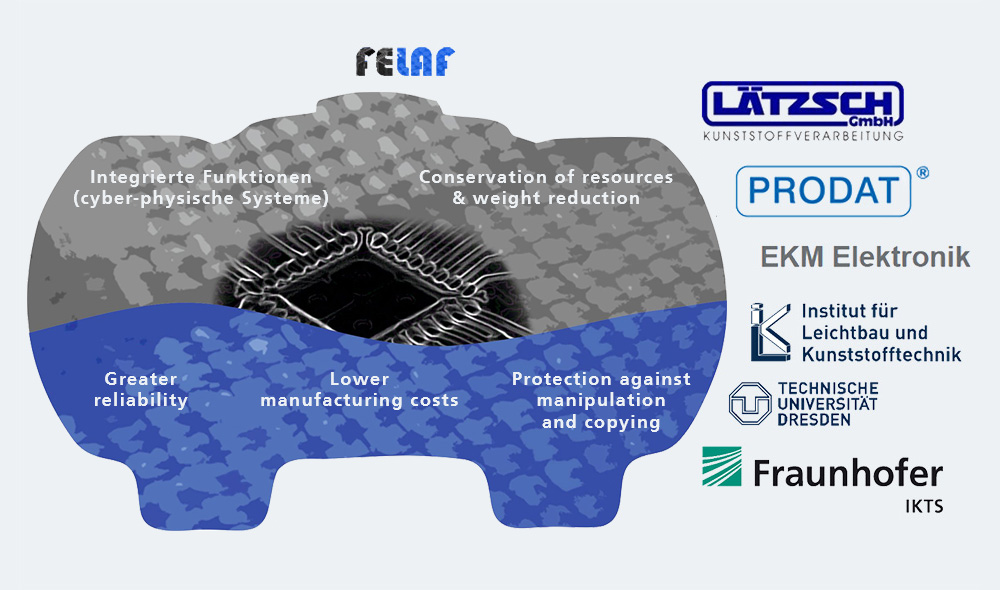Research: For integrated electronic measuring systems, there are requirements for the necessary service life resulting from the overall service life of the structure in which they are integrated. For tank applications, this service life is in the range of up to 30 years. To achieve this required long-term reliability for the electronic measuring system, the latest findings in assembly and connection technology (AVT) are to be applied. Integration by means of embedding and encapsulation, e.g., by means of a GRP layer, is becoming increasingly important here.
Preliminary work and publications by Fraunhofer IKTS have shown that this new technology has a very high potential to effectively protect the electronic components from stresses. Environmental influences such as dirt, oil and water are kept out by the system-related encapsulation of the embedding approaches. In addition, the polymer encapsulation of the entire electronics ensures that the individual components and therefore the entire electronics system are subjected to different stresses.
To exploit the service life potential, it is necessary to analyze the respective stress situation. Subsequently, targeted adaptations of the assembly and connection technologies can be developed that enable the required robustness to be achieved.
Key results:
- The work to date shows that electronic systems embedded in glass fiber reinforced plastics can be integrated into composite structures.
- The results form the prerequisites for the successful integration of sensor technology with associated evaluation electronics in a GRP composite. The functionality was demonstrated using the example of a level measurement system. The sensor system was integrated into the wall of a mobile GRP tank.
- ·Using mechanical and thermo-mechanical tests on suitable representative test specimens, it was possible to identify any damage that occurred and confirm it using FEM. Significant damage is caused by cracking in the GRP matrix polymer and by delamination due to insufficient adhesion between the electronics, circuit board and the surrounding composite.
- Measures were derived from the knowledge gained to inhibit and mitigate damage. Minimizing the proportion of solder stop in the PCB layout proved to be suitable. Delamination could thus be significantly reduced.
- Furthermore, the local damage of the thermomechanical strain at the component edges and corners could be decoupled by means of a buffer layer. The decoupling layer was realized by means of a thickly applied adhesive elastic paint coating. Reliability tests confirmed the effectiveness of the measures.
Project period: April 2015 – September 2017
Project partners: Lätzsch GmbH, Prodat GmbH; EKM Elektronik GmbH & Co. KG; Dresden University of Technology, Institute of Lightweight Engineering and Polymer Technology (ILK)
Funding agency: VDI/VDE Innovation + Technik GmbH
Funding: Federal Ministry of Education and Research - Innovation Initiative

![BMBF_CMYK_Gef_M [Konvertiert]](/en/departments/electronics_microsystems_biomedicine/testing_electronics_optical_methods/reliability_microsystems/publicly_funded_projects/felaf/jcr:content/contentPar/sectioncomponent/sectionParsys/imagerow/imageComponent1/image.img.jpg/1717397572319/BMBF-gefoerdert-2017-en.jpg)